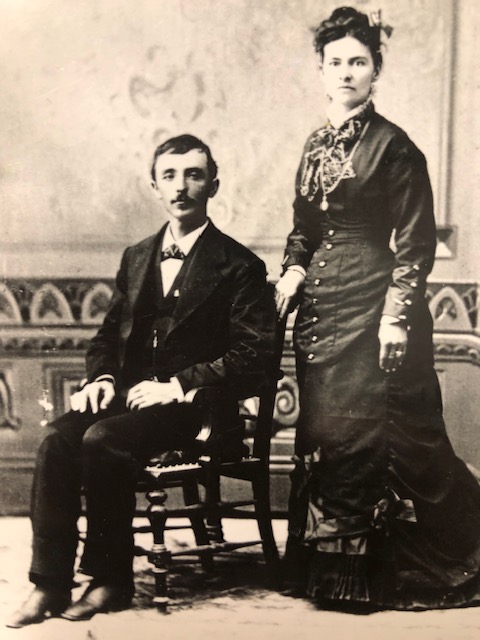



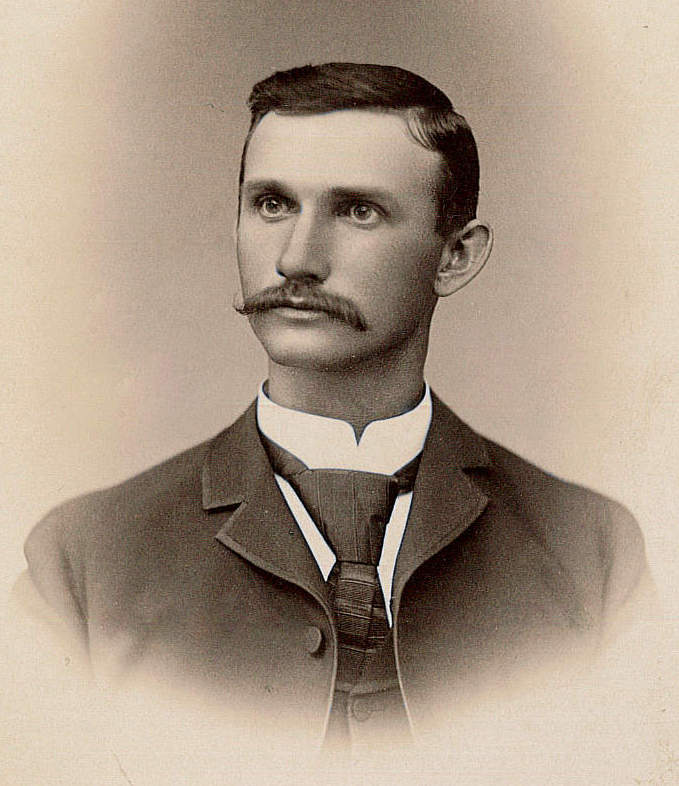
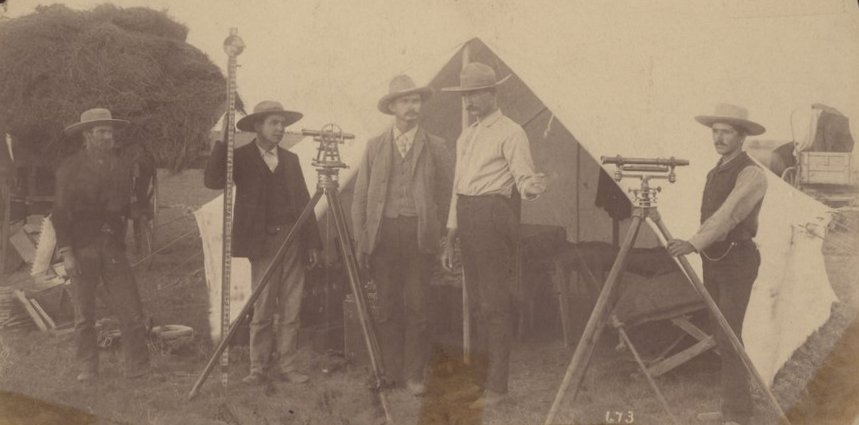
As head surveyor for the construction of Lake McKinney, Hedge was given the honor of opening the gates to allow water to fill the lake. On February 12, 1907, it was his act of heroism that saved the life of Fred Frost. Hedge was following Frost, civil engineer John Phillips, and rodman Harry Beckett at the newly constructed lake when it was being filled. Certain that they knew where the road was and that the water was shallow, the three men decided to cross instead of going around. Frost turned the team of mules into the water, and Hedge watched as one of the mules slipped off the road bed into deeper water, pulling the other mule and wagon in after him. Hedge leapt from his buggy into the icy water, cut the mules free and managed to pull Frost to safety. Beckett was nowhere to be seen, but Henley could see Phillips. Because he was too far to reach, Henley made his way to dry land and secured a pole then pushed back into the water to rescue Phillips, but the young man refused to take hold of the pole extended to him. Hedge worked in the freezing water for a full hour trying to locate Phillips and Beckett to no avail. “Then someone had the forethought to get him some dry clothes and he worked until 10 o’clock at night when he went home to assure Mrs. Hedge that he was safe.”
Southwest Kansans can rely on the Deerfield Brotherhood to continue their tradition of serving up the “Grand Daddy of All” groundhog suppers each year regardless of Punxsutawney Phil’s ability to see his shadow. Around 125 volunteers work together to pull off what just might be the longest running groundhog supper in Kansas. Preparations have already begun for this year’s event which is slated for February 7th. Thirty hogs will be butchered this Sunday yielding roughly 4,500 pounds of sausage that will be seasoned with the Brotherhood’s secret recipe. Of this, 1,100 pounds of patties will be cooked and served the day of the meal, and the rest will be sold.

The supper has grown immensely since the early days when the tradition began with a single hog. Brotherhood and Epworth League records indicate that the supper started in 1938 with a profit of $27.17. The first mention of the event in the Lakin Independent was in 1940 when Rev. I. W. Woolard announced that the Deerfield Methodist Brotherhood had decided to put on a groundhog dinner on February 1. Ticket prices were 25¢ and 15¢, and approximately 125 meals were served.
Frank West came up with the idea of the groundhog supper. He and fellow Methodist Ed DeKeyser were instrumental in organizing the Boys Scouts in Deerfield which also became a Brotherhood mission. In addition, proceeds from the supper in the 1940s helped with improvements and supplies for Deerfield’s Methodist Church, bought worship books for local men serving in the war, and aided the youth camp at Lake Scott.
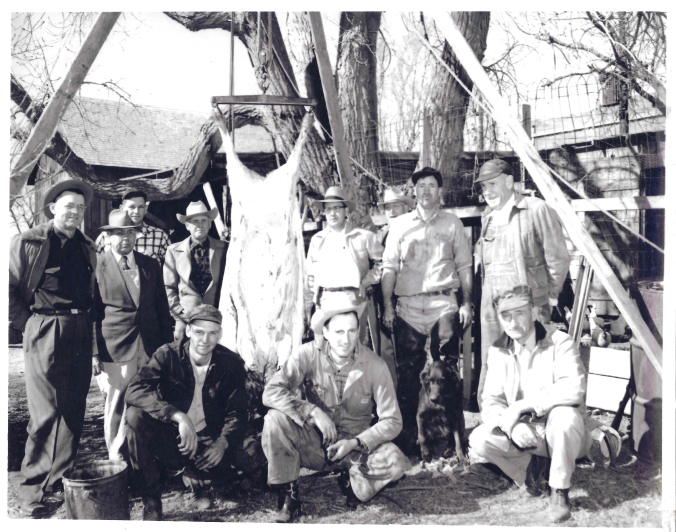
The suppers were originally served in the basement of the old Methodist Church. The late Max Miller wrote, “The basement could seat 50 and at times the crowd was so large that guests were seated in the sanctuary by numbers and waited until their number was called. The south basement windows were taken out so the food that was cooked at the parsonage, Harley Rector’s, and the High School could be passed through.”
Due to the growth of the supper, the event was moved to Rex Miller Hall in Deerfield’s newly built grade school in 1957. Seating capacity went to 180, and the cost for meals was $1.25 for adults and 75¢ for children. In February 1966, the Garden City Telegram reported that the supper had grown from a two-frying pan operation to a three-kitchen operation with a two-way radio system. The supper had already earned the reputation for being the best in Southwest Kansas, and in 1967, the gathering netted over $1,000 for the first time. Funds from the event in the 1950s and 1960s were mainly used for equipment and emergency expenses at the Methodist Church. The Brotherhood also made 28 wooden banquet tables which were stored at the school and used by other groups such as the Lions and Grange.
Butchering and processing took place at various locations until 1976, the first year that cut-up was done at Duncan Lockers. By 1979, the supper had become more than the Methodist men could handle. Other congregations and community volunteers became involved leading to the formation of the Deerfield Brotherhood in 1980. During the next 10 years, over 10,000 people attended the suppers and over $29,000 in profit was shared with the Deerfield community, churches, and Boy and Girl Scouts. The meal’s growing popularity throughout Western Kansas was evident by local media coverage and supporters who were willing to drive to the little village of Deerfield for what was labeled “The Original Southwest Kansas Groundhog Day Supper.”
In 1992, the event was moved to Deerfield’s Community Building where the seating capacity went to a whopping 396. Sausage was cooked in the old firehouse, biscuits were baked at the Deerfield Grade School, and gravy was stirred together in the Home Ec. Room of Deerfield High School. Still today, the old firehouse and Grade School are utilized for cooking with corn being the only menu item cooked at the Community Building. Volunteers coordinate delivery to the community center, and they have their system down pat. During the 1990s, the net profit distributed throughout the Deerfield community was $30,480, and the Brotherhood established a scholarship for local college-bound students in 1994. This tradition continues with two scholarships usually being awarded each year.
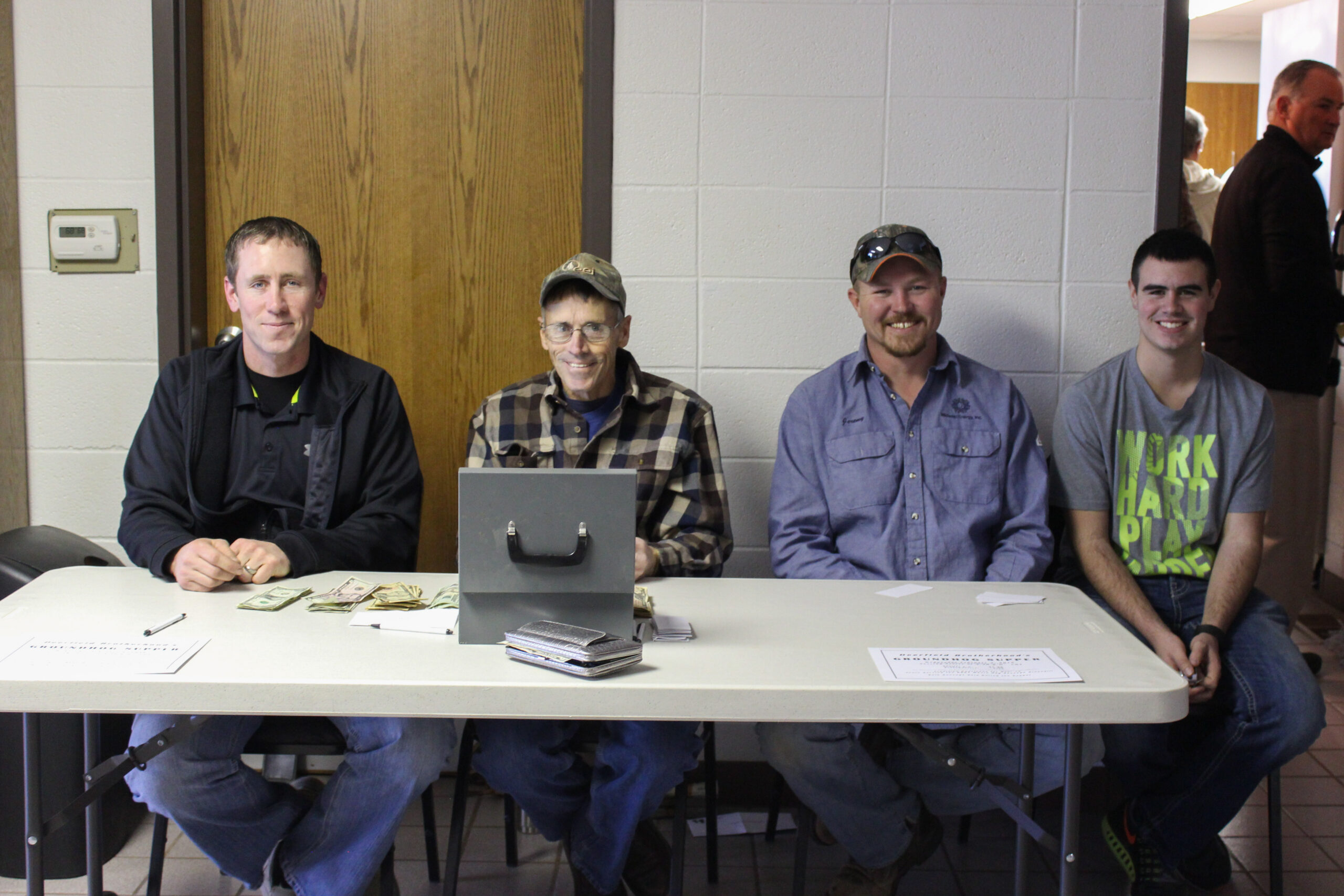
In 2005, the supper cleared $6,000 for the first time ever. In 2009, 3,600 pounds of sausage was processed, 35 gallons of gravy was used along with 2400 biscuits, the applesauce ran out before the evening’s end, and a record-setting 1,411 meals were served. Last year’s meal netted a record $14,256, bringing the total raised since 2000 to over $190,000.
“It is just amazing how much money has been raised through the years,” said Joe Eskelund, treasurer of the Brotherhood. The men meet immediately following the meal to decide how the monies earned will be used. Proceeds have helped Deerfield’s Summer Celebration, Kearny County DARE, Deerfield schools and churches, the Kearny County Historical Society, Deerfield Community Building, Chachis Place, DHS Trap, Lakin Gun Club, multiple youth organizations, community events and much more.
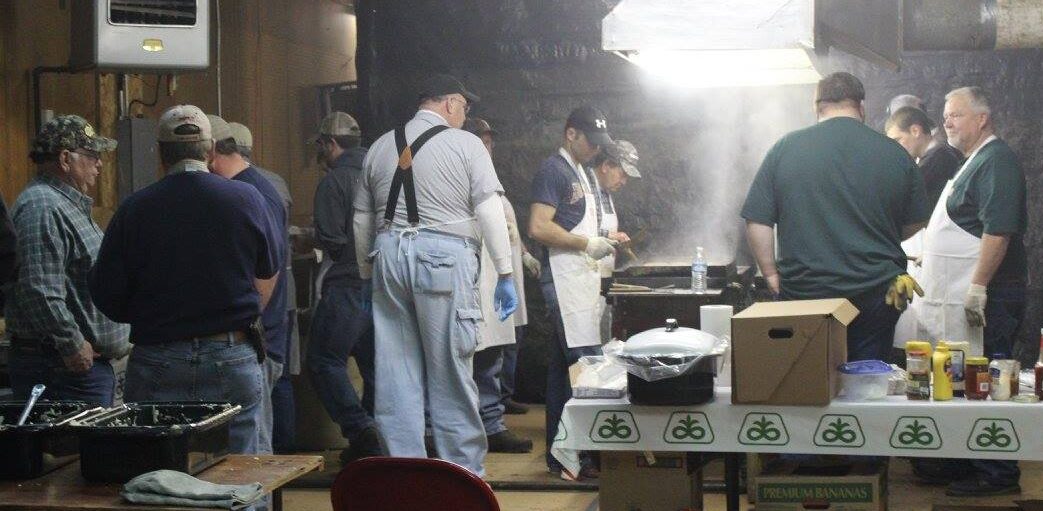
Up to and including the 1999 supper, a time-honored order known as ‘The List’ was used to designate future leaders. Following that year’s event, a ‘By Committee’ leadership was adopted with the work spread among committees which are headed by loyal volunteers. Ross Miller volunteered his time to oversee the big event, and Eskelund agreed to serve as secretary/treasurer. Miller, a 1976 Deerfield High School graduate, and Eskelund who graduated from DHS in 1977 both came up through the ranks, first helping back when young men in the sixth, seventh and eighth grades were required to assist with the meal. Deerfield students still help with serving but are no longer required to.
Miller credits the success of the groundhog supper to the dedicated men who have helped and continue to help pull off the well-orchestrated meal. He said some have been volunteering for more than five decades. “I don’t know where we would be without the help we get. So many deserve praise to be heaped upon them. Many will never have their name mentioned in written word, but those who are in the know understand the efforts of these local heroes and sacrifices they made for the good of the community. It’s been a blessing.”
Beginning in 2000, letters were sent out as a call to arms for volunteers for cut up, ticket sales, set-up and the supper. Roughly 400 letters are sent to rural and town mail boxes just prior to each year’s event, and the Brotherhood welcomes anyone who would like to help sponsor the shindig or volunteer. Membership in the Brotherhood and Deerfield residency is not required; however, volunteers must be male.
While Eskelund plans to continue as treasurer, Miller is stepping down after this year’s event and 25 years of leading the charge. He has been grooming some of the younger men to take his place. Watch the Lakin Independent for more details about this year’s groundhog supper or check out the Deerfield Brotherhood’s Facebook page.
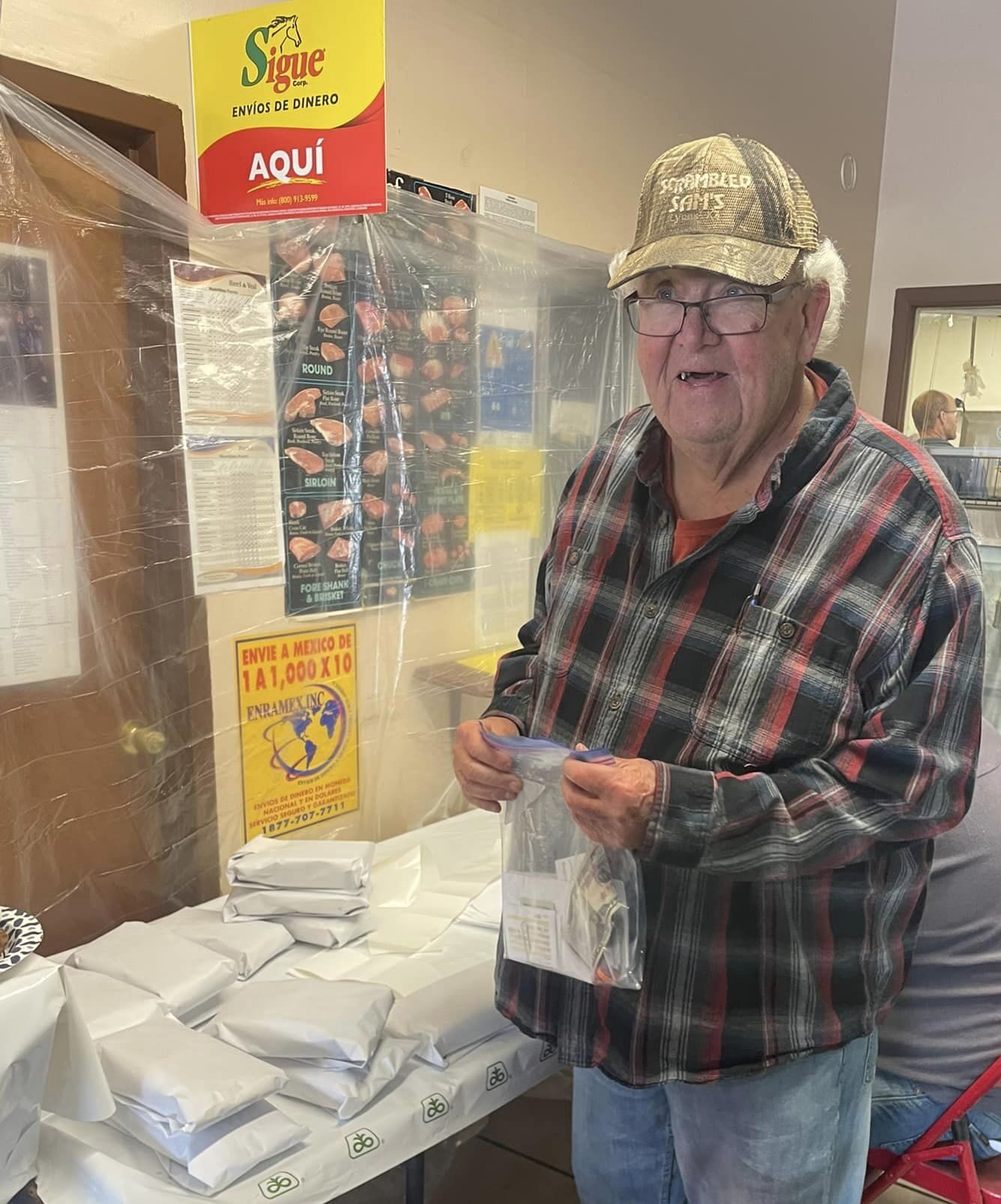
Special thanks to Ross Miller and Joe Eskelund. Other sources included: History of Kearny County Vol. I & II; archives of the Lakin Independent and Garden City Telegram; Deerfield Brotherhood Facebook page; deerfieldbrotherhood.wordpress.com; usd216.org; and the Winter 2006 Legend.
As one of the first residents of the Deerfield area, Samuel Harrison Corbett was deeply interested in the welfare of Deerfield and its citizens. A highly respected and a prominent member of the agricultural community, Sam was widely and favorably known as a man of sterling worth and a worthy representative of the courageous pioneers who settled the county. In fact, Corbett was once referred to as the number one citizen of the Deerfield Community by Foster Eskelund, a life-long Kearny Countian and former president of the Kearny County Historical Society. Born at Baltimore, Maryland in 1859, he was but 12 years old when his father died unexpectedly. Sam went to Boonsboro, Maryland to live with an uncle and remained in his home for a year. Later he spent two years at Sharpsburg where he rose at 4 a.m. every day to do chores and repeated them each evening after school. In return, Corbett received his board and clothes and $30 a year.
In 1877, Sam left to seek his fortune in Kansas and lived in both Lincoln and Graham counties where he worked for claim holders for board and the barest of wages. He survived on two meals a day with supper being a steady diet of only mush and milk. Sam grew extremely homesick but couldn’t gather enough money to return to the East. He started with a caravan to Silver Cliff, Colorado in 1880; however, when the group arrived at Fort Wallace, Corbett decided instead to remain there and become a sheep herder. He eventually made his way to the Arkansas Valley where he gained employment as a cow punch for the XY Ranch. He traversed the XY’s range from Garden City west to Hartland, and the spring round-ups brought him in contact with almost every hill and vale within a radius of 250 miles. That was a dangerous time, and the ranch boys had to stay on high alert. Sam grew to know all the country, the cowboys, ponies and brands from the Adobe Walls region to the Smoky Hill River and loved the stories the cowboys told around the camp fires on the open plains or sheltered from the storms in the sod bunk house at ranch headquarters.
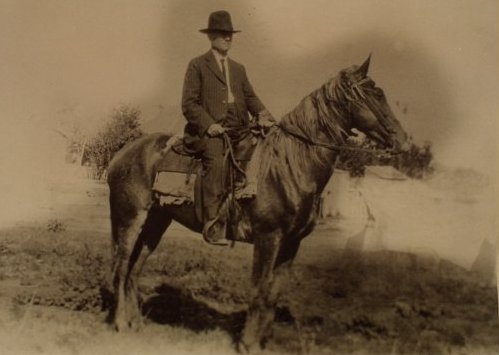
After four years with the XY, Corbett intended to make a business of catching mustang ponies; however, his plans were changed by a charming young lady whom he wooed and won. In 1883, he married Miss Dolly Caswell who came to Deerfield in 1882 with her widowed mother. Instead of chasing ponies, Sam filed on a piece of land and established his home on the southwest quarter of section 16, township 24, range 35. He built his bride a 14×20-foot box house which was then considered a “mansion” in this section of the country. As his wealth increased, Mr. Corbett added to the house until a one-story dwelling of seven rooms sheltered he and Dolly and their six children.
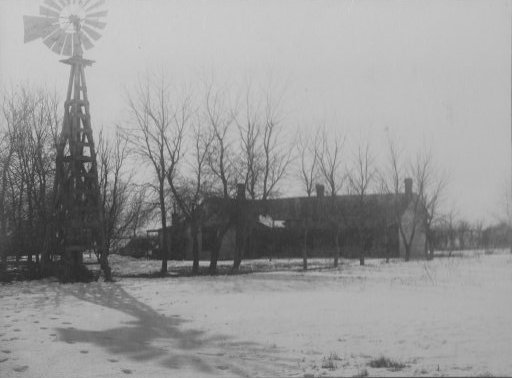
While working for the XY, Corbett started building up his own ranch; thus, he had a small bunch of cattle to start with when he assumed possession of his ranch. After losing his entire herd in the great blizzard of 1886, Sam borrowed $150 and began buying and selling condemned cow horses. Stock raising became a highly profitable endeavor for Sam, and his tenacity helped to develop the open prairie from a cattle range to a fine agricultural paradise.
Corbett was also a highly successful business man. In 1902, he went into business with Fred Sower, purchasing the grocery house of George H. Tate at Deerfield. Corbett & Sower dealt in general merchandise and groceries, selling everything from pitch forks to “Moses’ best flour.” Sam bought out Sower in 1904 and built a new store building in 1907, advertising as “the old reliable.” Corbett’s store was a gathering place for nearly every resident of the city. He also continued to sell cattle and horses and raise hay on the side. Following his retirement, Sam and Dolly moved to Colorado Springs in 1918.
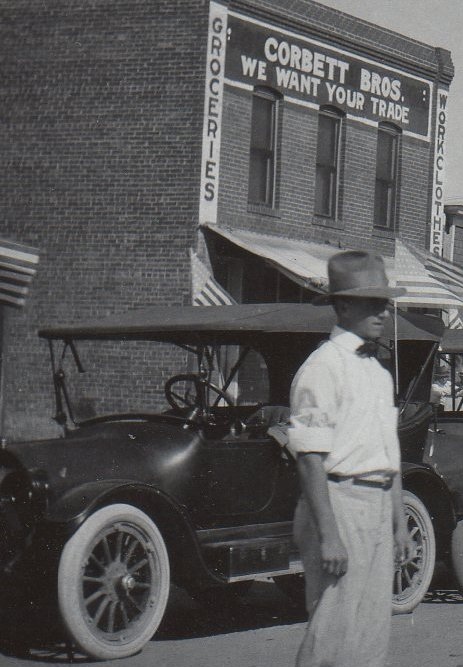
Sam Corbett never took an active part in political affairs, but he served as clerk of the first school board of the township. He also served as Deerfield postmaster for over five years and was instrumental in establishing a rural route with over 80 boxes on it. Although he was raised under Catholic influence, Sam became a Sunday school leader and active member of the Methodist Church to which his wife and children belonged. He was also a wide reader of history, both ancient and modern. During retirement, Sam wrote stories of his life on the range and sent them with letters to his friends. Samuel Harrison Corbett died in 1931, and his body was brought back to Kearny County for burial in the Deerfield Cemetery. Dolly died in 1949 and was buried in Evergreen Cemetery in Colorado Springs.
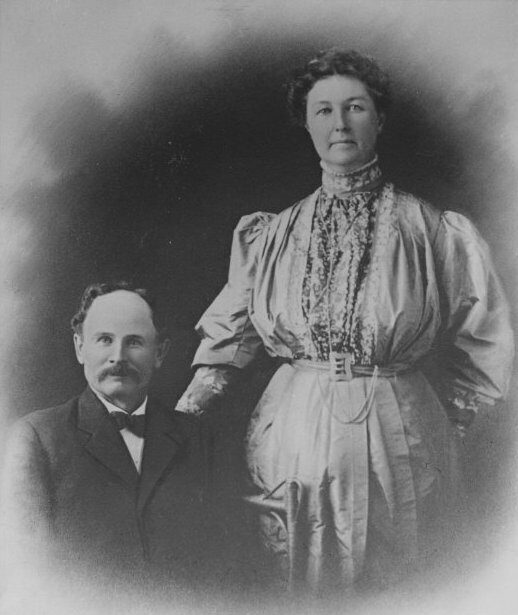
SOURCES: A Standard History of Kansas and Kansans by William E. Connelley; Diggin’ Up Bones by Betty Barnes; Southwest History Corner by India H. Simmons; History of Kearny County Vol. 1; Museum archives; and archives of the Kearny County Advocate and Hutchinson Gazette.
Weather forecasters predict arctic temps in the days ahead along with a chance for more snow, but Kearny County still has plenty of the white stuff left over from Monday’s blizzard. Just what kind of winter is in store for Southwest Kansas, and could it be reminiscent of the winter of 1918-1919? Snow blanketed Kearny County with a two-foot snow fall on December 16, 1918, and with temperatures averaging in the 20s, the snow didn’t go away any time soon. Oldtimers who had been here for 30 years or more claimed that they had never saw snow so deep.
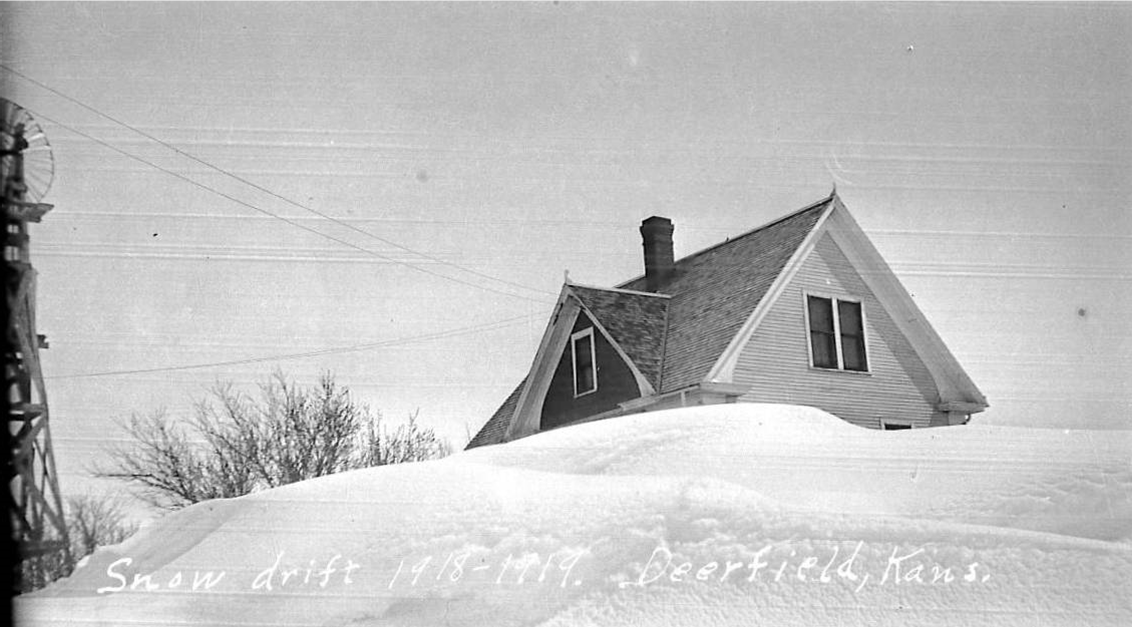
On January 3, 1919, a reporter in the Prairie View area north of Deerfield reported that their neighborhood had been snowbound for two weeks with a foot and one-half deep snow and seven-foot drifts. Perhaps the saddest incident reported was the death of John Bender who lived north of Deerfield. The 35-year old father died of pneumonia after a bout with the flu. “When undertaker Nash reached there Sunday (December 29, 1918) there were four bad cases in the home and the father lifeless.” An effort was made two days later “to get a casket to the home and the trip was abandoned after a mile or two of the way covered.”
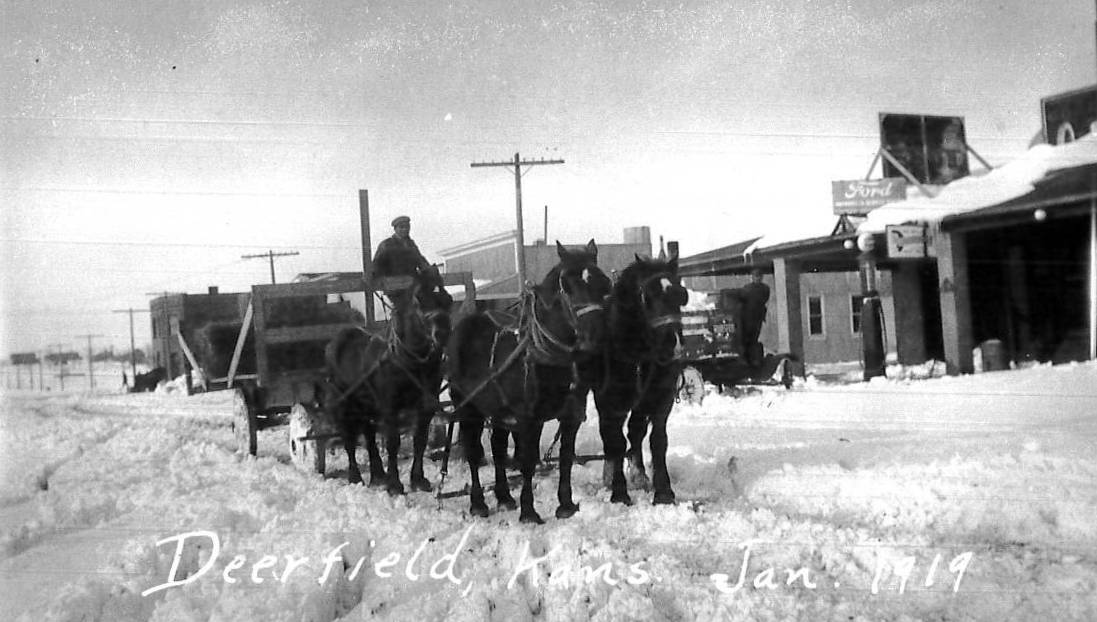
By January 10, the Advocate reported that the greatest problem in Southwest Kansas was getting feed to the stock, “and it is one of the busiest times our stockmen have ever experienced.” With many cattle to feed and no grass in sight, a large number of cattle were shipped to market and others were driven to the river where feed was shipped in. Four or five hundred tons of hay had been purchased in Colorado and was being shipped to Kearny County by rail which furnished some relief to anxious stockmen. Many tons of straw, alfalfa and cottonseed cake were shipped via the Garden City railroad to Wolf siding from eastern Kansas. Farmers constructed their own sleds of various sizes and shapes to transport feed to their livestock and bring coal home to heat with. With each issue of the paper came more news about horses and cattle dying or being thin and weak near death. Farmers made wooden scrapers and drags to bare the ground, and locals were eager to see the snow go. By January 24, the sentiment was “it is enough for one winter … it will take a lot of “Old Sol’s” heat to melt this deep snow.” Elsewhere in the January 24th Advocate was the report that Dr. Richards had walked eight miles from Deerfield to Lakin on account of his patients as the snow was still a handicap to travel out of broken paths.
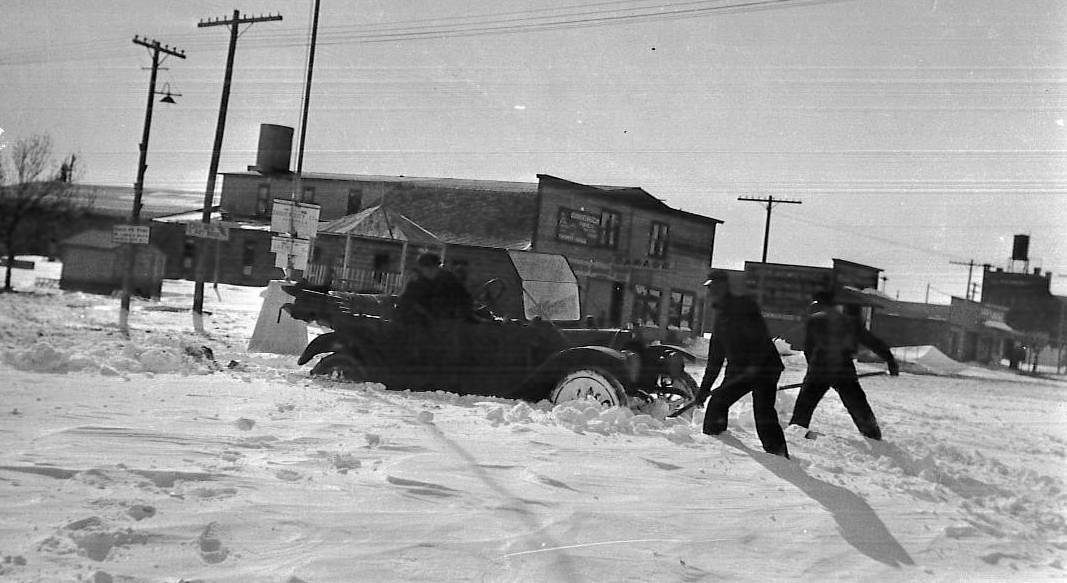
Mail delays had become the norm, and at least one carrier abandoned his automobile and resorted to a team and buggy. On February 7, the Advocate reported, “We ascertained Saturday from a trustworthy source that twelve hundred tons of hay had been unloaded at this point in the past five weeks and one hundred tons of straw.” Fortunately, coal dealers had stocked up enough and were able to provide a steady supply of black diamonds to their customers.
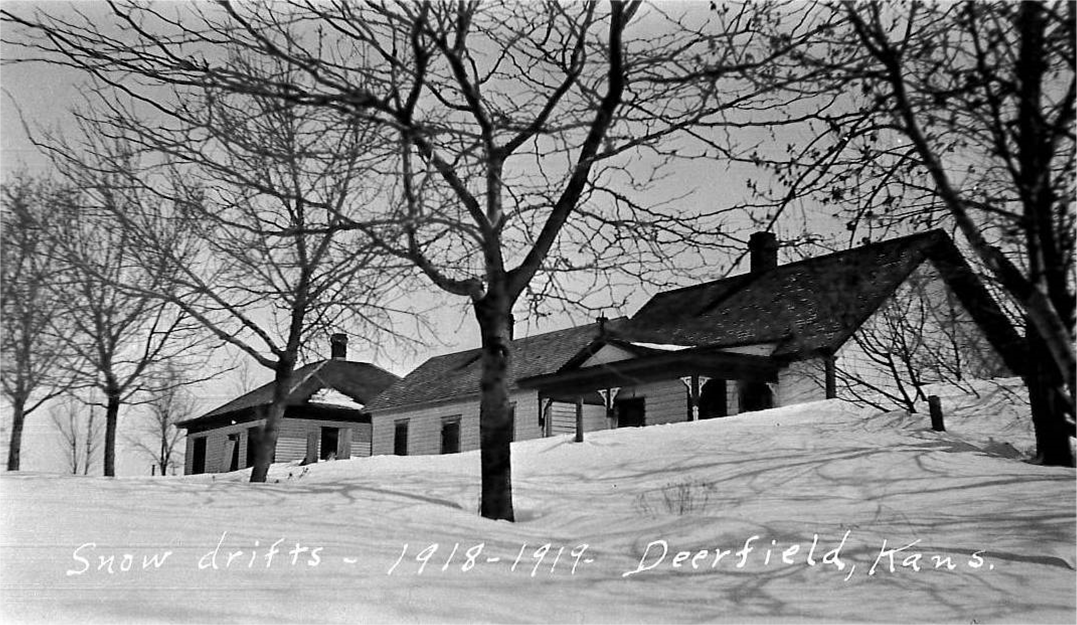
“Four degrees above zero Sunday morning . . . we are promised a warm wave by the 18th. We hope it will be warm enough to melt the snow,” was the report in the February 14 Advocate from Prairie View. That same issue carried the news that “Herman Ladner was out riding in his car Sunday, the first car to run in the hills since the 18th of Dec..” On February 21, a Deerfield citizen reported that they still could only see “two or three bare spots of ground.” There were still students who were not able to get to school because of road conditions. “The long distance, mud, snow and slush make it a drudgery for many a pupil and teacher.”
Then came another snow. On February 28, the Prairie View reporter wrote, “We thought that last week, one more day of sunshine would make a finish of the snow, that fell the 16th of December, but on Tuesday night and Wednesday and Thursday, a rain started and wound up with six inches of snow, which seems in no hurry to leave us.” Many complaints were coming in to the county health officer of unburied cattle carcasses and other animals that had perished in the severe weather.
Spring-like days in mid-March, “assured us that the snow would soon be a thing of the past.” Snow in South Kearny had all disappeared except in a few spots where there were heavy drifts. The weather was looking fine, farmers were going to work listing and planting their fields, and the rural people were coming into town again. Mail carriers were once again able to complete their regular routes in a timely fashion. Thinking that winter was over, some ranchers moved their cattle to pastures that had no protection. The Prairie View Sunday School which had been closed since October on account of the flu and impassible roads was scheduled to begin meeting again on April 6.
Then, without warning, came a raging blizzard. The April 11 Advocate said that snow had started falling on Tuesday, April 8, “and up to the hour of going to press was still at it.” A reported 1,000 head of cattle in Kearny County were lost in the April storm alone. The late Henry Molz and his father, Adam, lost 112 head after moving 200 to their pasture two miles northwest of Lake McKinney just prior to the blizzard. In milling around, the cattle either pushed the fence over or packed the snow until they could walk over and drift to the Amazon Ditch. The first ones could not get out, and the rest walked over them. Twelve head drifted into the lake. The Molz’s gave the hides to skinners for removal of the carcasses. “Lydia has received the shock caused by winter number 2,” cried the April 25 Advocate. The report came from the West South Side that “dead cattle are to be seen any way you look, while going along the roads.” Stockmen started hauling hay, cake and chop again as the snow storm found a number of them somewhat short on supplies and weary of a repeat. All in all, an estimated 30% of the cattle in Kearny County were lost during the winter of 1918-1919.
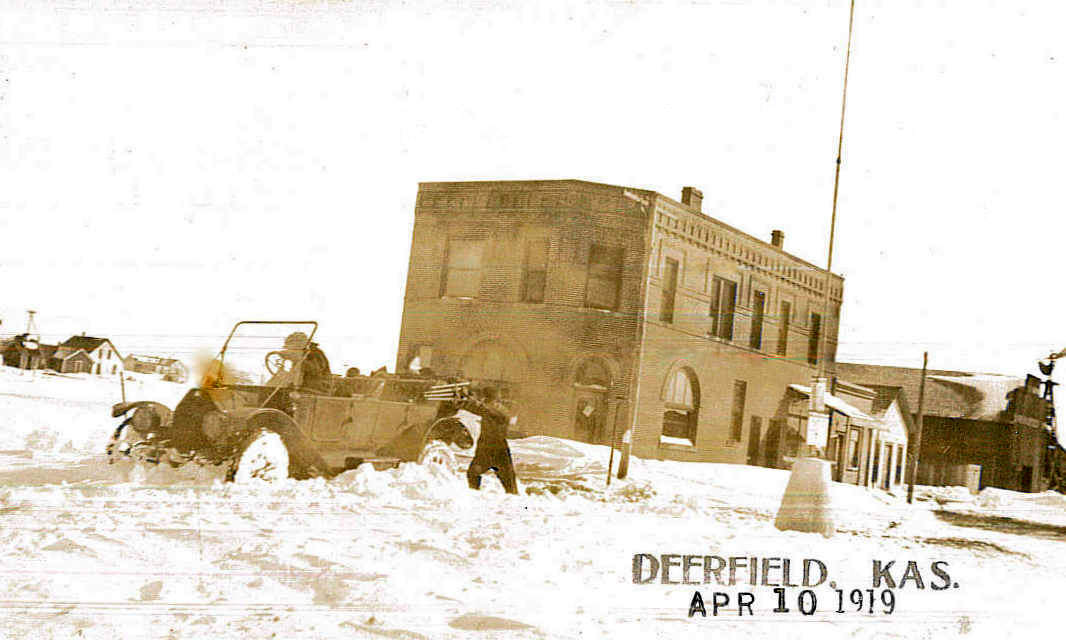
SOURCES: Diggin’ Up Bones by Betty Barnes; History of Kearny County Vol. II; archives of The Advocate, Museum archives, and courier-journal.com.
Dr. Grant Hastings saved multiple lives and delivered hundreds more into the world during his tenure at Lakin. His arrival here was announced in December 1921 when he purchased the medical library, office furniture, fixtures and instruments that belonged to Dr. George C.W. Richards. At the time, Hastings was in practice in Garden City with Dr. Sanford Bailey. His Lakin office, which he shared with dentist L.W. Hopkins, was over the Kearny County Bank on the southwest corner of Waterman and Main. A graduate of the University of Kansas Medical School, Dr. Hastings had built up a reputation as a careful and competent physician and came to town very highly recommended.
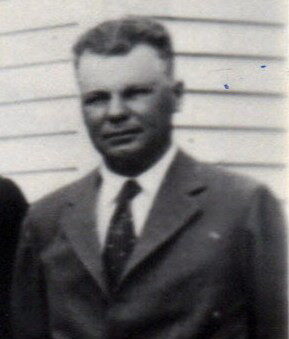
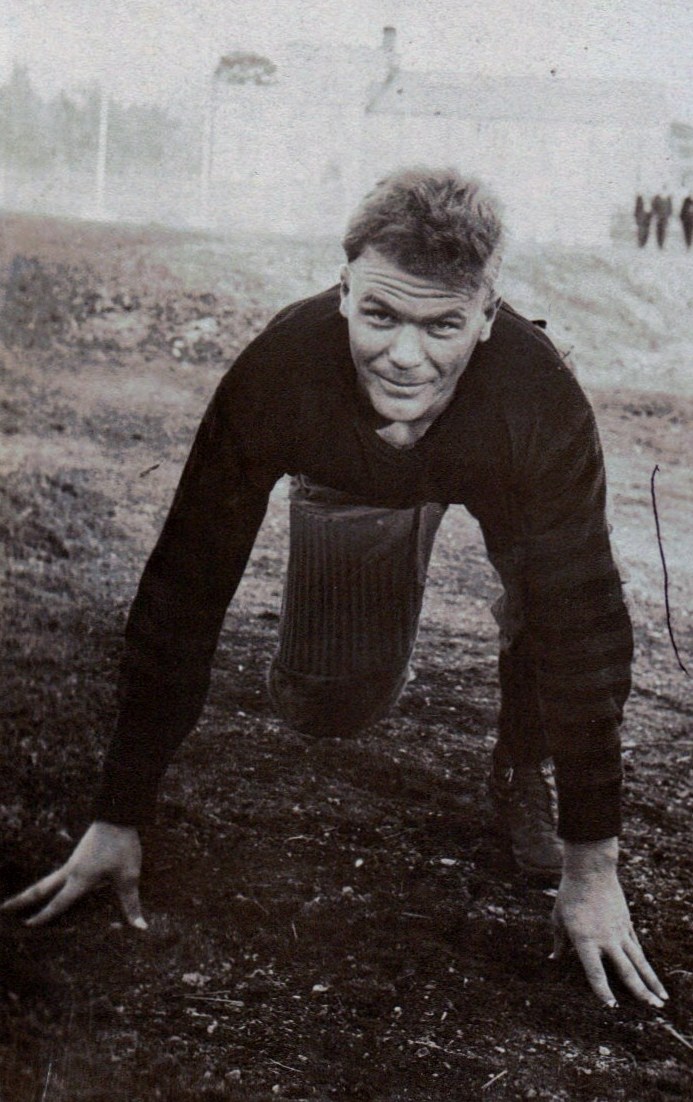
A month later, county commissioners appointed Hastings as county physician of Kearny County. The good doctor who still lived in Garden City and retained an office there was also Finney County’s appointed physician and health officer. Hastings was believed to be the first to hold the office of county physician in two counties at the same time. “The work in the two counties will keep him on the jump but the doctor is young and active and likes to work,” reported the Garden City Herald, “he could if necessary take one or two more.”
Dr. and Mrs. Hastings moved to Lakin in June of 1922, and in the summer of 1926, work was underway on Dr. Hastings’ new building just to the east of the then Lakin State Bank on East Waterman Avenue. The Independent announced that the brick structure was conveniently located and “will be quite an improvement on Waterman.” The doctor made his office on the first floor in the west wing. The Chamber of Commerce rented the upper floor for a club room, and the other rooms were rented out as the dental office of Dr. P.L. Woods and a barber shop. A radio was installed upstairs in the club room which had plenty of windows for light and ventilation.
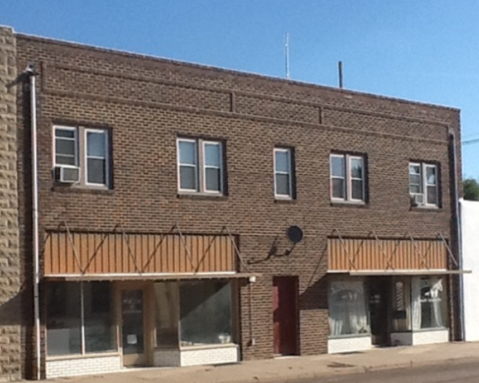
In October of 1927, the Independent announced that the Chamber of Commerce had consented to using only half of the second floor, and the other half had been converted to a hospital as Dr. Hastings had found that driving to Garden City to treat his patients was very inconvenient. There were four rooms, each with an outside window and steam heat. “With the assistance of Dr. Woods in surgical operations and Mrs. Lavina Shinkle, a trained nurse, many cases formerly taken to the hospitals in Garden City can now be conveniently taken care of. The doctor has been particularly successful in surgical work, and all minor operations will be given attention here as well as many of the major operations. All of which tends to show that you don’t have to go elsewhere to be sick; you can have a first class illness right here in Lakin.” The Chamber of Commerce decided to give up their club room in the Hastings building in January 1928, enabling the number of hospital beds to increase to eight.
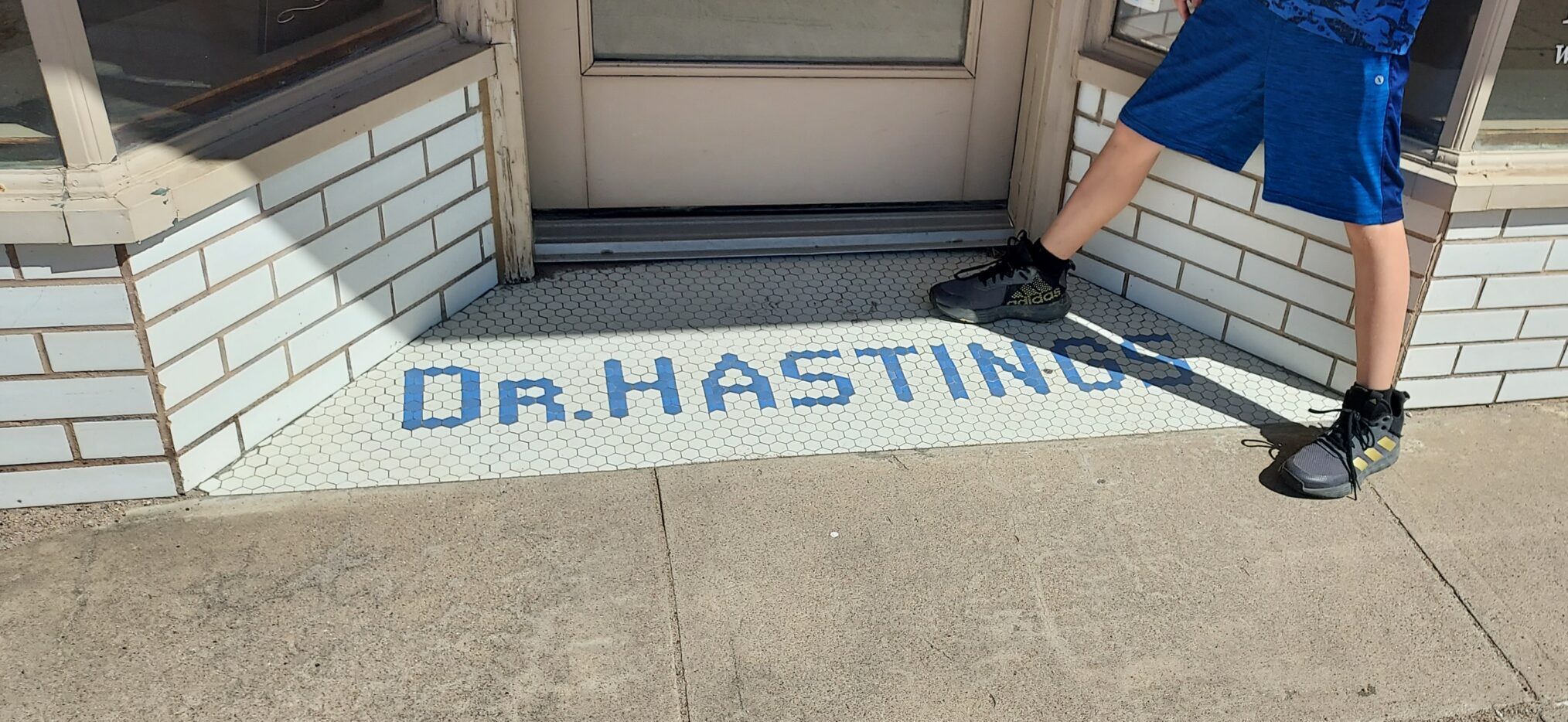
Dr. Hastings began dividing his time between Lakin and Garden City in January of 1941 when Dr. Herman Sartorius of Garden City was called to active army duty. In October that year, Hastings located permanently to Garden City. His Lakin office was taken over by Dr. E.M. Ireland. Other doctors to utilize the Hastings building included Rudolph Sabo, Fred Dietrick, and Gordon McAfee. The hospital continued to be used until the Kearny County Hospital (now the building that houses the Kearny County Senior Center) was opened in 1952. Although he no longer lived here, Dr. Hastings actively worked with the hospital committee to help secure funding for the new hospital.
Dr. Hastings retired in 1965 and died in December of 1967 at the age of 78 in Garden City. Among his pallbearers were his Kearny County friends B.C. Nash, Edd Murray and Ralph Hutton. A World War I veteran, he served as a medical adviser on the first Kearny County draft board and was active in several organizations including the Lakin Masonic Lodge, president of the Chamber of Commerce and chairman of the festivities for the dedication of the Kearny County Court House in 1939. Dr. Grant Hastings and his wife, Agnes, had three daughters: Jane, and her twin sisters, Ann and Ellen.

SOURCES: Archives of the Lakin Independent, Garden City Herald and Garden City Telegram; Museum archives; History of Kearny Co. Vols. I & II; and Ancestry.com.
Kansans who wanted to toast the new year during the late 1800s and early 1900s may have had to make a doctor’s appointment first. Kansas became legally dry on May 1, 1881 with an amendment to the state constitution that forever prohibited the manufacture and sale of intoxicating liquors except for medical, scientific and mechanical purposes. Alcohol had to be prescribed by a physician to be obtained legally, and drug stores were made the responsible agency for liquor sales. Druggists could sell liquor only when a doctor’s written prescription was presented along with a sworn affidavit from customers stating that the liquor purchased would not be used as a beverage. Close tabs were kept on the amount of alcohol that pharmacies were receiving and selling as well as to whom they were selling to.
District judges were the only ones with the authority to give out permits for selling liquor. All other places where liquor either was manufactured or sold in violation of the law were deemed public nuisances, and offenses were punishable by a fine and 30 to 80 days in jail. Primary responsibility for the law’s enforcement fell to county attorneys but was made difficult because sales of intoxicants equaled several hundred dollars annually in additional income for pharmacists. Selling liquor “for medicinal purposes” quickly became the largest loophole in the law with physicians prescribing alcohol-laden substances for a wide range of illnesses from colic to diarrhea, and new diseases were “invented” for which liquor was the prescribed elixir. Since the term “intoxicating” was not clearly defined, some businessmen sold concoctions under names like “cider” claiming to not know that they could be intoxicating.
According to the Kansas State Historical Society, the law was largely ignored. Many of the state’s drinking spots remained in operation, and underground clubs and saloons also popped up in various places. Some communities and counties across Kansas were content to let them continue operation with minimal fines. Still, many citizens believed that the sale of liquor tended to affect communities socially, morally and politically. The temperance movement which had begun in the territorial days of Kansas gained momentum before the turn of the century with Carrie Nation and her hatchet leading the way. The Hurrel’s Nuisance Bill was enacted in 1901 which specified that all equipment, liquors, and property kept in and used to maintain places where liquor was manufactured, sold, given away or bartered were also common nuisances. The law provided for the issuance of search and seizure warrants against places where liquor was thought to be sold.
Take the case of local doctor George C.W. Richards, a highly respectable member of the community. Richards arrived in Kearny County in 1885 and was one of the first two doctors in Hartland. He later operated drug stores in Lakin and Deerfield where he also treated patients. The good doctor was known to make house calls as far away as Stanton County and was complimented by a 1906 Advocate for doing his part to build up the city and county as “one of our foremost businessmen.” Richards was so well liked that he was elected as a representative to the State Legislature.
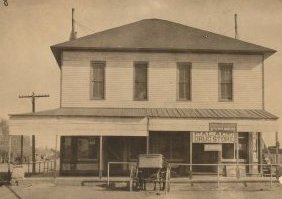
But in November 1908, Richards’ Lakin business, the Palace Drug Store, was raided under the search and seizure act after a formal complaint was filed by Rev. Chambers, pastor of the Methodist Church. Among the items seized by authorities were 51 bottles of Peruvian Elixir with 42% alcohol, 37 bottles Rock Candy Cordial containing 30% alcohol, 3 bottles of Walker’s Blended Malt Whiskey, 12 bottles Duffy’s Pure Malt Whiskey, one case of beer, 32 quart-bottles of Clay Wilkins Pure Malt Whiskey 44% alcohol by volume, and at least three other “medicines” which all contained from 39 to 40 percent alcohol. Richards was found guilty of maintaining a nuisance, fined $100 and court costs, and sentenced to 30 days in jail but was released on $1,000 parole bond. Richards sold his drug business in January 1909, and the doctor and his wife moved to California the following month.
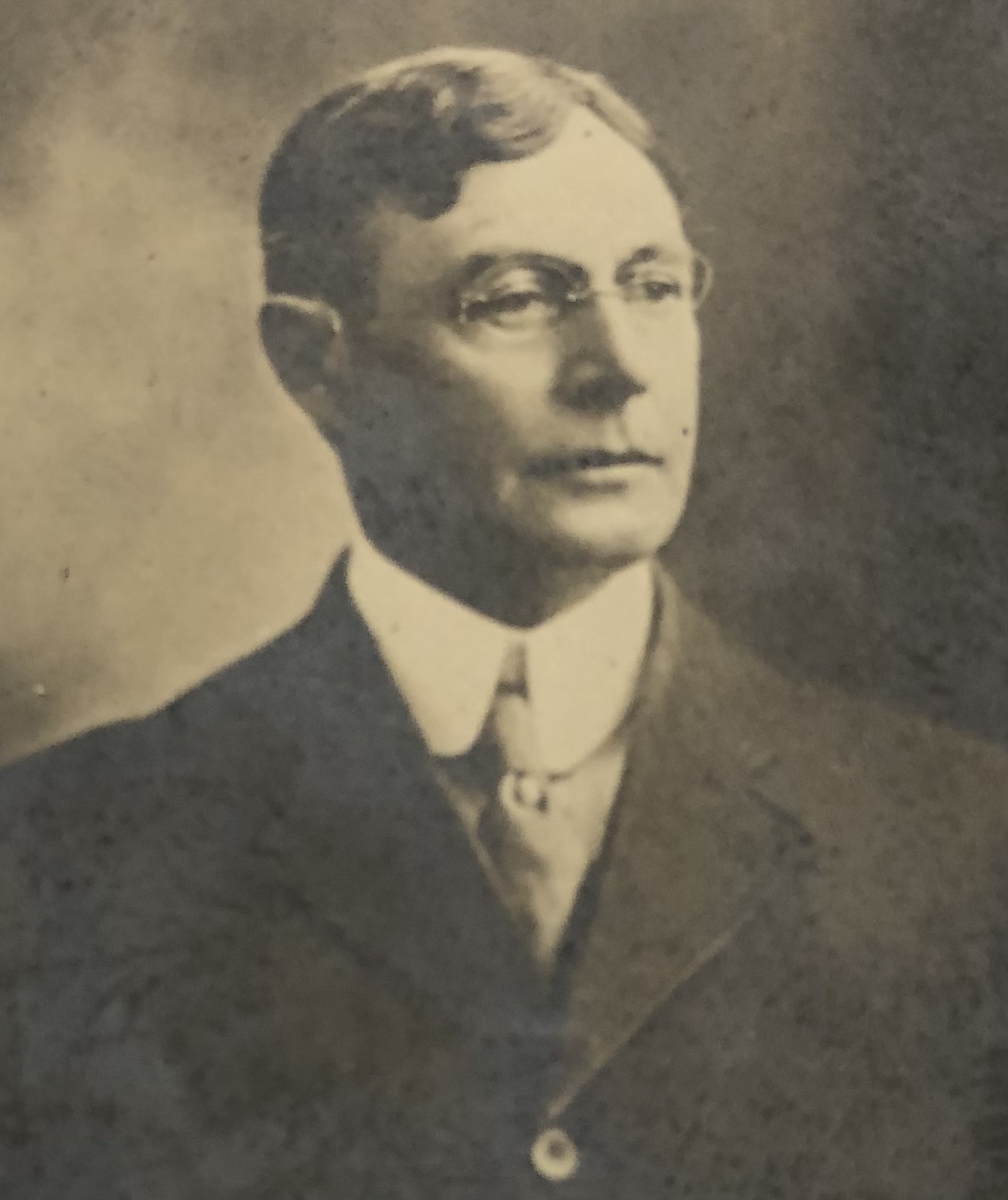
The Kansas Legislature continued to revise and strengthen the statutes, and a 1909 revision closed the major loophole in the old law that had allowed druggists to sell liquor for “medicinal purposes.” In February of 1917, Governor Arthur Capper signed a version of the national bone-dry law into effect. The most drastic anti-liquor enactment written at that time made it a crime to possess liquor in any form. The lone exception was communion wine.
With the advent of the first World War, the United States Congress banned the use of foodstuffs in the production of distilled liquor from September 1917 until the end of the war. This was followed up with the 18th Amendment to the Constitution. The Prohibition Amendment declared the production, transport and sale of intoxicating liquors as illegal but did not outlaw the actual consumption of alcohol. To enforce prohibition, Congress passed the Volstead Act which declared an intoxicating beverage to be anything that contained more than 0.5% alcohol, and liquor, wine and beer qualified as intoxicating liquors and were prohibited. The U.S. was the first nation to make such a provision a part of its basic law. National prohibition began on January 17, 1920, one year after the 18th amendment was ratified by the states.
Of course, making liquor illegal did not make it non-existent. Newspapers from that time period contain plenty of stories of moonshine makers, bootleggers and speakeasy bars despite the attempts of national, state, and local law enforcement officials to “dry up” the country. On March 22, 1933, President Franklin Roosevelt signed the Beer and Wine Revenue Act. This law levied a federal tax on all alcoholic beverages to raise revenue for the federal government and gave individual states the option to further regulate the sale and distribution of beer and wine. Because Prohibition was still officially the law, a limit had to be placed on the amount of alcohol allowed in beer. Hearings were held, and the political process worked out a standard that could gather the necessary votes — 3.2% alcohol by weight. The passage of the 21st Amendment in December 1933 officially ended national prohibition, but Kansas remained dry until 1937 when the state began allowing 3.2% beer. Kansas’ 1881 amendment was tossed out in 1948 when voters rejected prohibition, and the state was placed under a local option law.
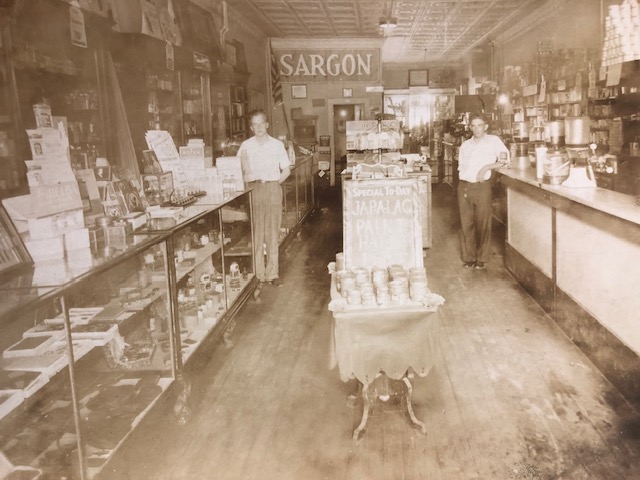
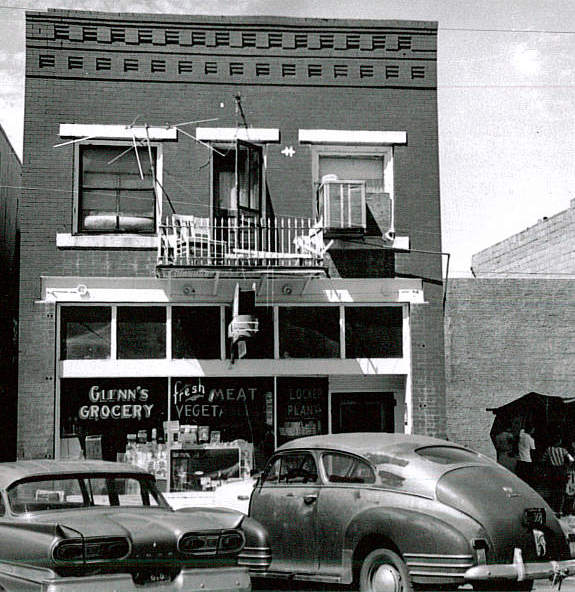
SOURCES: Liquor Wars and the Law by Kenneth J. Peak and Jason W. Peak; Diggin’ Up Bones by Betty Barnes; Kansas State Historical Society; High Plains Public Radio; History.com; Wikipedia; and archives of The Advocate and Lakin Investigator.
On the northwest corner of Lincoln Avenue and Lakin Street in Lakin is an unpretentious building which has been used for several years as apartment rentals. Those who don’t know the history of the building would probably never dream that it was once St. Anthony’s Catholic Church. Like other denominations and organizations, the first Catholics here met at various locations in town. Church services were sporadic and led by Catholic missionaries or priests visiting from nearby towns; word of their arrival being spread by postcard or through the grapevine. Catholics would come for miles to attend mass, and for some, attending the services required making a two-day trip.
Talk of erecting a church building began in 1902, and in 1903, lots for the church were donated by Michael Weber and his wife, Jennie. Church fairs were held in 1904 and 1905 to raise funds, and by March of 1906, the lumber had been received at a good discount from the firm of O’Loughlin and Weber and was placed on the ground. Construction progressed slowly but persistently with other fundraisers being held to help pay for the project. Mr. Weber supervised construction. Worship services were held in the unfinished church beginning in 1907, and on Feb. 5, 1907, a solemn High Mass was celebrated there in honor of the 25th wedding anniversary of Mr. and Mrs. John O’Loughlin, two of the first Catholics in the community.
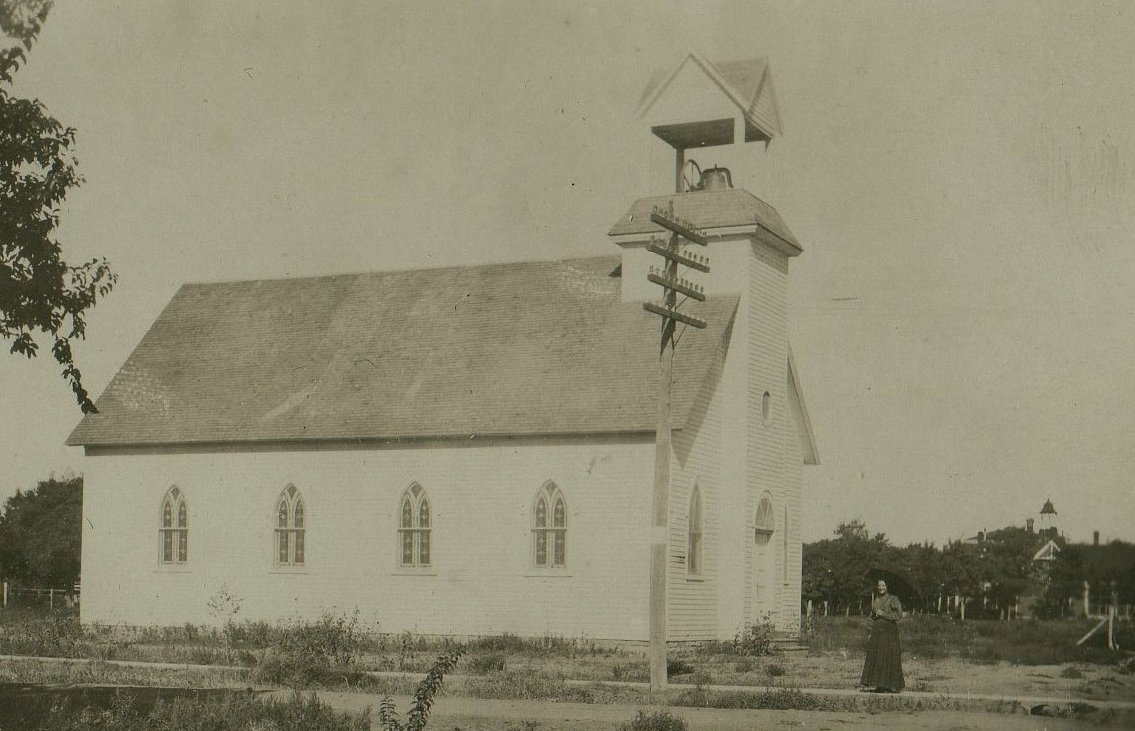
Once the church building was completed, an official dedication ceremony took place September 30, 1908, led by Bishop John Joseph Hennessey of Wichita with assistance from the reverends Julius Monier of Wichita, Austin Hull of Spearville, Michael Mennis of Dodge City who had previously served Lakin, and Joseph Bogner who was the priest in charge of Lakin at that time. Both Lakin and Ulysses were served by the same priest and were missions attached to Saint Mary’s Church of Garden City. The status of Saint Anthony’s continued the same until July 1, 1948 when the Lakin church became a self-supporting parish, and the Rev. Alex Leiker was installed as its first resident pastor.
Excavation was started for a parish house on the west grounds behind the church in April 1931. A generous donation years before from Mr. and Mrs. A.G. Campbell, along with other funds, paid for the structure. Prior to the building of the house, visiting priests frequently stayed at the Weber home a block north of the church.
Following the construction of Lakin’s first Catholic church, Michael and Jennie Weber were in charge of ringing the church bell three times a day. It is unknown when the bell at St. Anthony’s ceased to ring. By 1963, the parish had grown to a membership of 285 and outgrown the facilities. That September, the cornerstone was laid for the current church building, and dedication ceremonies of the church and blessing of the rectory were conducted December 8, 1964, making the move from the Lincoln & Lakin location both official and complete.
The bell from the old church building was saved and installed near St. Anthony’s church hall. An explanation for the ringing of the bell appeared in the August 5, 1910 Lakin Investigator, and with this being the season of Jesus’ birth, this writer felt compelled to include the entire article:
“Morning noon and night the citizens of Lakin hear the ringing of the catholic church bell. . . Why is the signal with the bell given three times a day? To remind us, to remember oftener, and to impress more seriously on our minds the great grace granted us by the Eternal Father, when he announced, through the angel Gabriel, the incarnation of his own divine son. The prayer said at the signal of the bell is commonly called Angelus, and its origin is as follows:
“Saint Bonaventura, in a general chapter of the Franciscan order in 1225, directed the Angelus to be said in all Franciscan houses at the evening bell. Some recited the prayer also at sunrise, some both in the morning and evening. When the great victory at Belgrade seemed such a clear response to the united prayers of the Christian world, Pope Callixtus III directed the bell to be rung also in the middle of the day. Thus the devotion assumed the form so familiar to us: The triple player, signifying the beginning; the middle and the close of the day. The prayer recited at each sound of the bell comprises the three versicles: 1 — The angel of the Lord declared unto Mary, and she conceived of the Holy Ghost. 2—Behold the hand maid of the Lord, be it done unto me according to the word. 3—And the word was made flesh and dwelt among us. Each of these is followed by a Hail Mary. The devotion is recited kneeling, except on Sundays, when it is said standing, though a genuflection is made at the third versicle. Such is the general, touching devotion of the church, keeping alive faith in the mystery of the incarnation and in that mystery it is impossible to think of our Lord except in connection with His blessed Mother. It is a scriptural devotion, the words being taken from St. Luke, 1-28-35-31 St. John 1-14, the Hail Mary itself is mainly from St. Luke, 1-28-42.
“In many places, after the third strokes the three times, the bell tolls 33 times, the number of years our Savior was on earth, though that is not strictly observed here we sincerely believe the ringing of the Angelus can be made a great blessing to every Christian within its hearing if they too will turn their thoughts to the almighty Father for the moment. We know some protestants who, knowing the bell was a call for devotion, have fell into the habit of calling on the Lord for his blessings and help. Faithfulness in the sight of God, we are told, means far more than to be successful, so that those so faithfully ring out the Angelus in Lakin, morning, noon and night, little dream of the aid they are giving in the upbuilding of Christ’s Kingdom.”
Merry Christmas from Kearny County Historical Society!!!
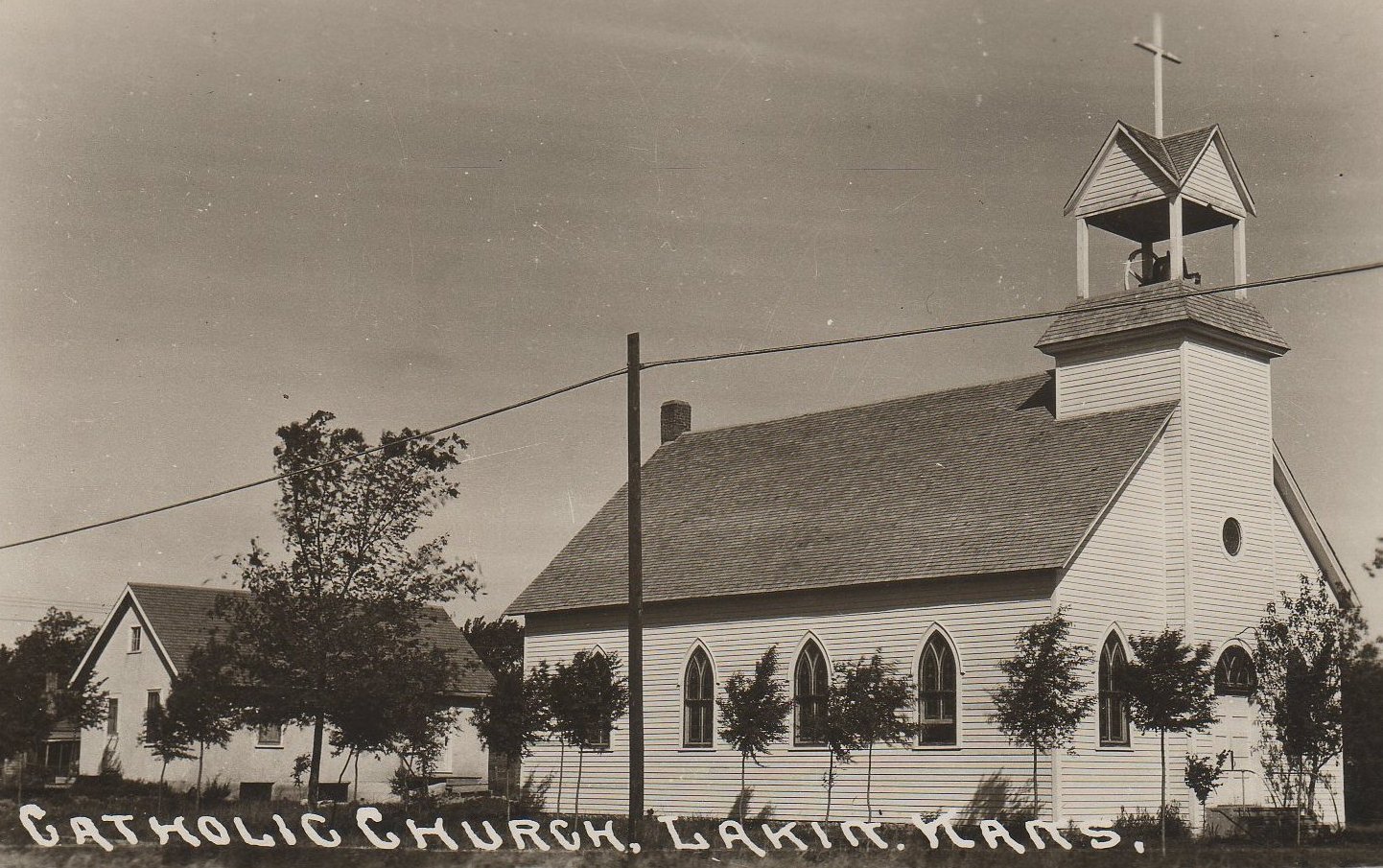
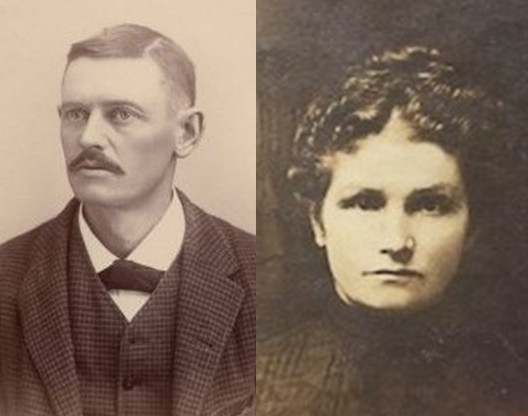
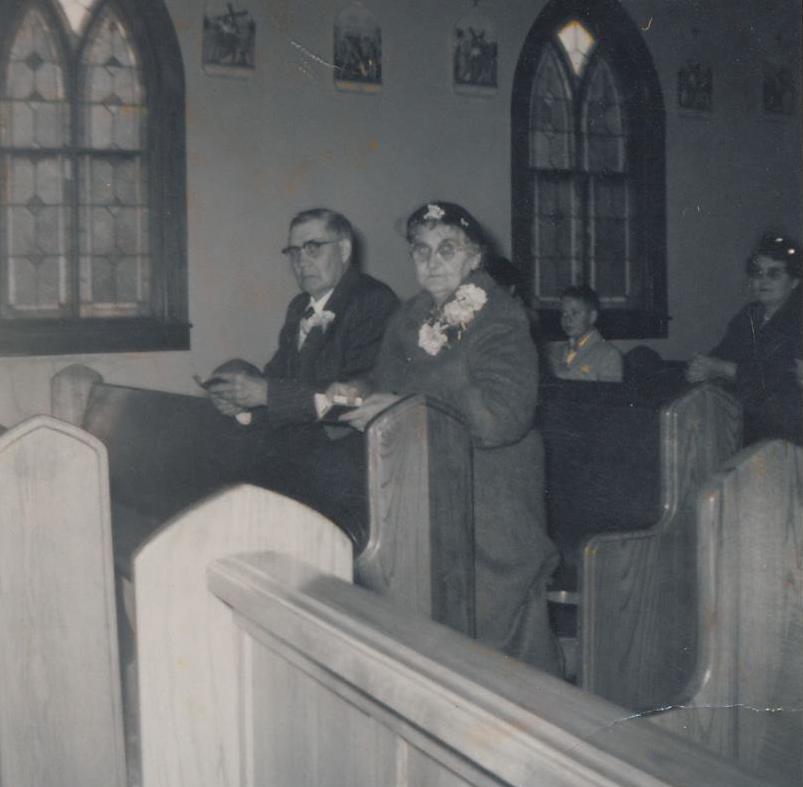
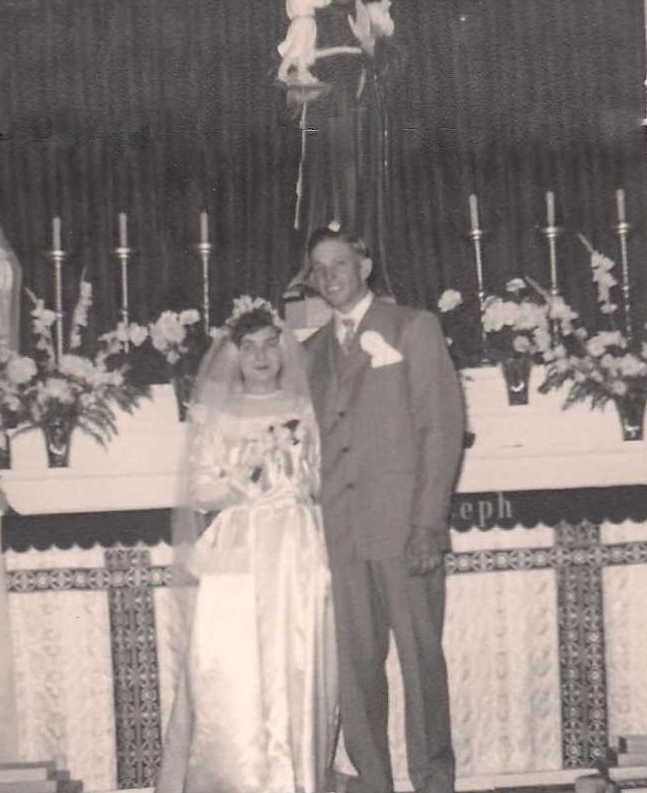
SOURCES: Information written by the late Father Alex Leiker; Ancestry.com; archives of the Lakin Investigator, Advocate and Lakin Independent; and Museum archives.
From beet growing to banking, A.G. Campbell met with success in many business ventures and was influential in both the Lakin and Deerfield communities. His great-grandson, Earle D. Rice, wrote that A.G. accomplished in his 25 years in Kearny County what took other men 40 to 70 years to achieve. Born Adam Grant Campbell in 1864 at Portsmouth, OH, A.G. was the son of William and Jane (Boyd) Campbell. The year following his birth, his parents moved westward to Scotland County in northeastern Missouri where A.G. grew to manhood.
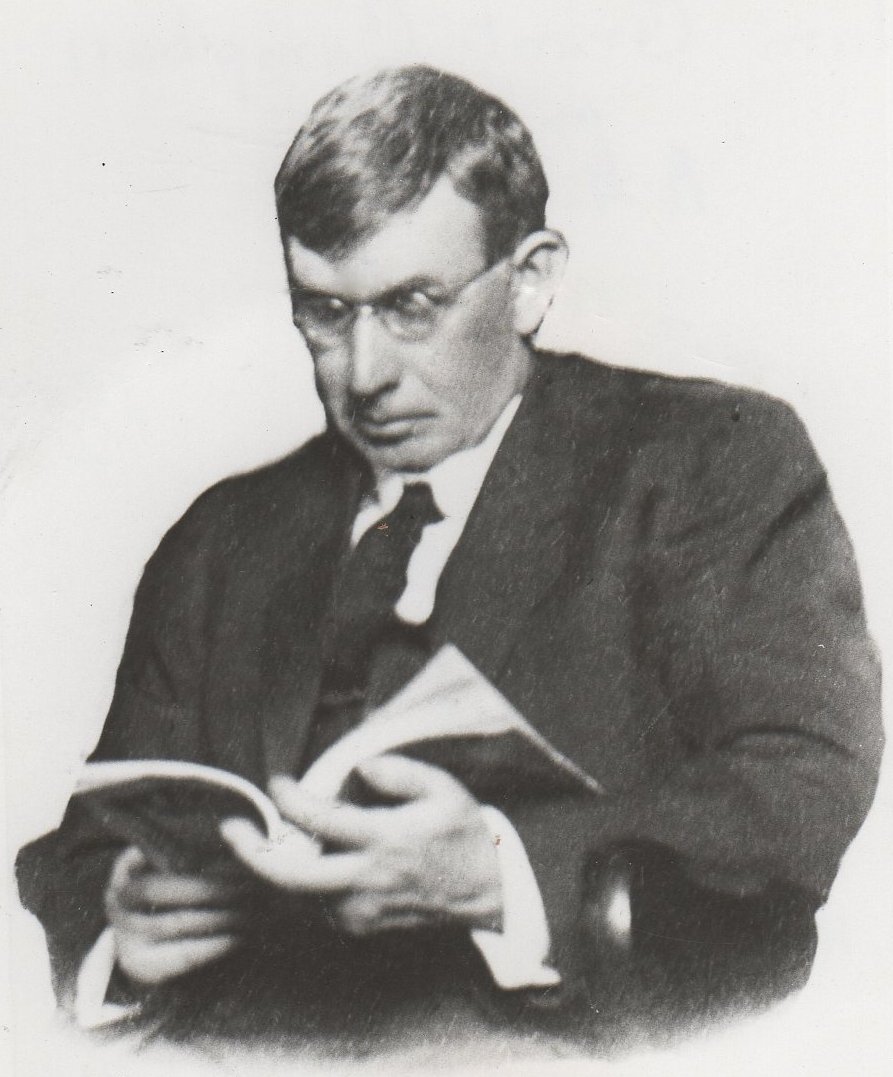
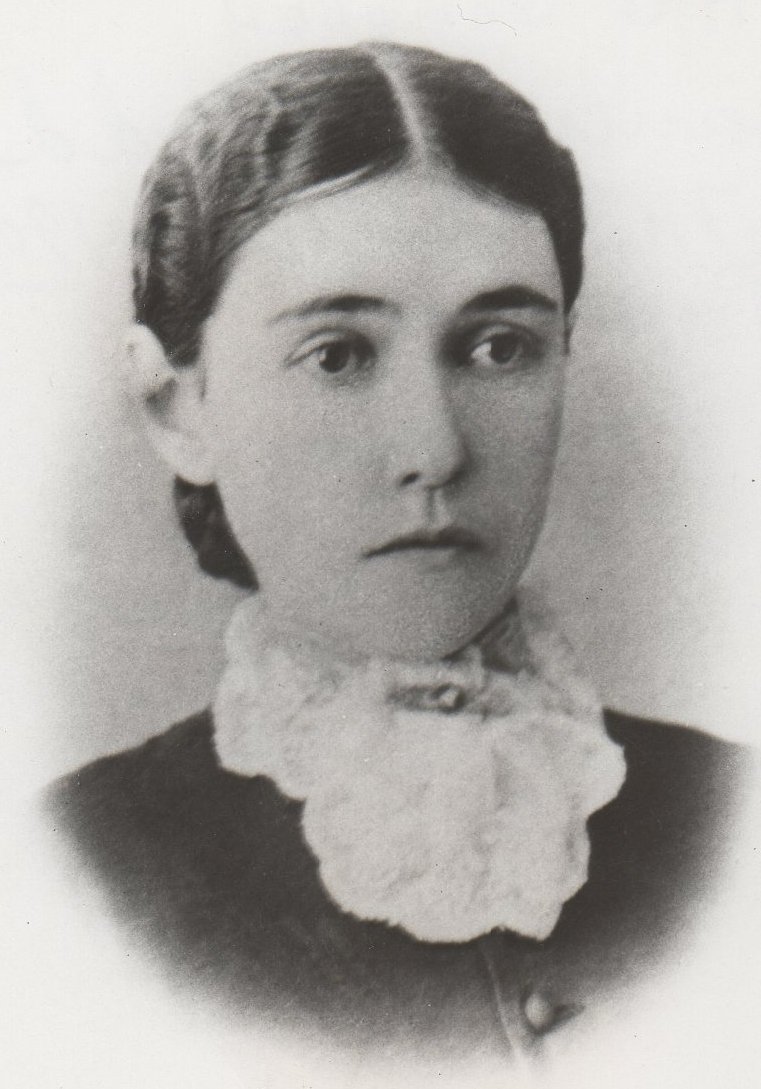
In 1885, he married Sarah (Sally) Mudd, the daughter of B.F. and Catharine (Medley) Mudd who was born in 1863 in Scotland County. She was from an English Catholic family who located to Maryland in the 1600s and gradually migrated west. Sarah and A.G. were married by a Catholic priest in the home of the bride’s parents. As the story goes, A.G. was of Scottish Presbyterian roots and refused during their wedding service to agree to raising their children as Catholics. The ceremony was stopped until their issues could be resolved. Needless to say, the children were not raised as Catholics, but Sarah remained a Roman Catholic all her life. The couple moved to Lakin with their six children in April of 1902. Their household goods, livestock, farm machinery and fence posts were shipped by emigrant car while Sarah and the children (Earle, Carl, Adam Jr., John, Mary and Catherine) traveled by passenger train.
The family made their home in Lakin for a month while their farm home (located seven miles northeast of here) was made ready. According to the April 12, 1902 Lakin Investigator, A.G. purchased the old Blazer and Jackson farms and 3,000 acres adjoining “which will make one of the best ranches in the county.” Part of the farm was under irrigation from the Amazon Canal while to the north was a vast area of unfenced buffalo grass. Later that year, Campbell acquired land 15 miles northwest of Lakin as summer camp headquarters for grazing. A.G. enjoyed a lucrative business in both ranching and farming. The irrigated crops from 1902 to 1906 were very good, and plenty of hay and fodder were raised for the family’s cattle and horses. The sugar beet era was just beginning in southwestern Kansas, and A.G. excelled at growing the crop. He was elected president of the Kearny County beet growers in 1905. Then, the US Sugar and Land Company came calling because the company wanted the Campbell’s farm land to create Lake McKinney. The farm was sold, and the Campbells moved into Lakin in September 1906. A.G. eventually acquired about 25,000 acres of land in Kearny and Hamilton Counties according to his great-grandson. In addition to raising cattle, he also raised Percheron work horses and mules, but that is only part of his story.
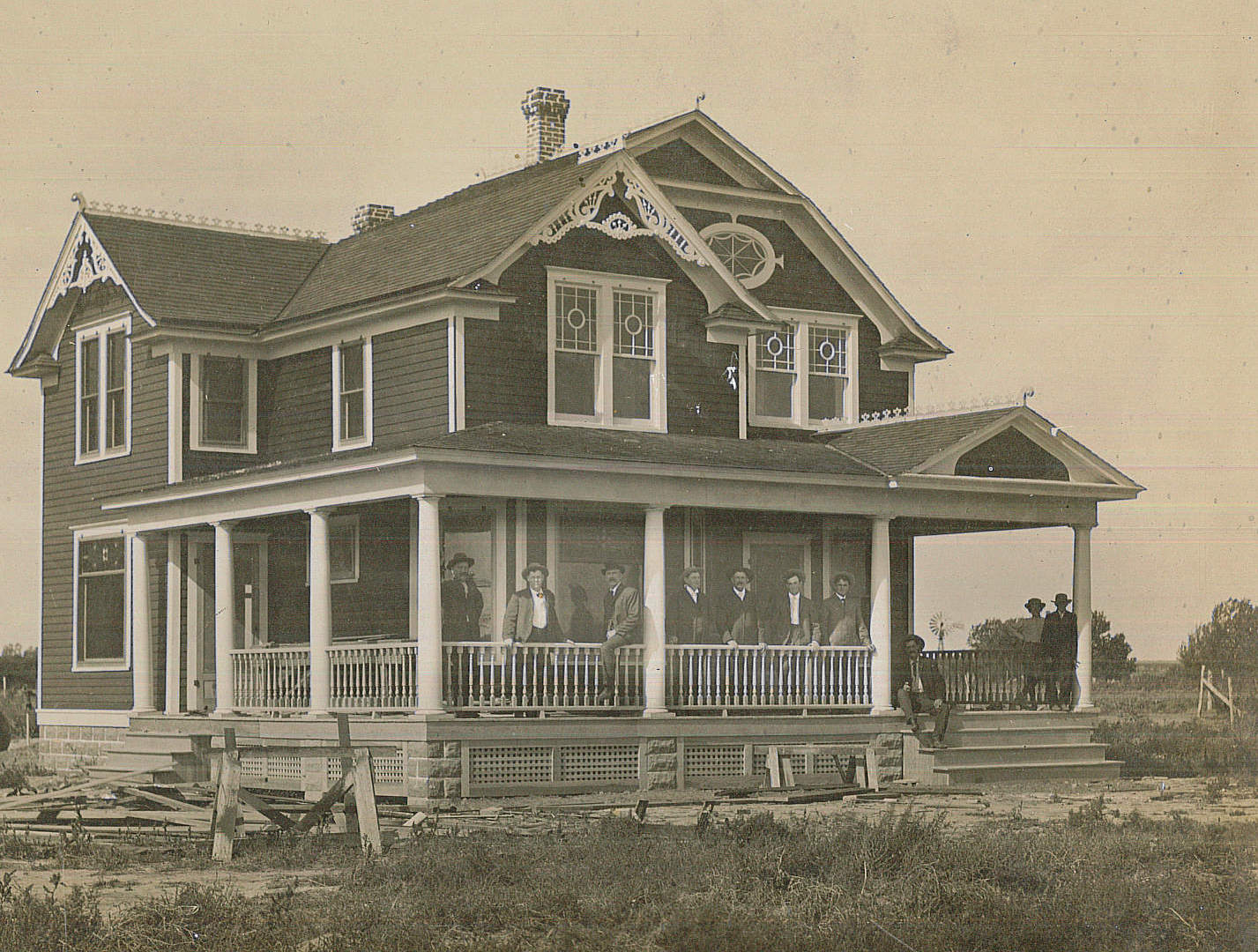
A.G. became a successful real estate agent as a partner in the firms of Campbell & Horde and Campbell & Loucks. In 1906, he went into business at Lakin with J.T. Horde in the Campbell-Horde Lumber company. Then came the construction of the Campbell building on Main Street in Lakin in 1907 which was initially leased out to house Fitzgerald and Locke General Merchandise. In December of 1908, A.G. purchased their dry goods stock and took on O.E. Piper as a partner, and the store was ran under the name of Campbell-Piper Mercantile Co. That partnership was dissolved in 1912, and the store became known as Campbell Mercantile. In January 1915, A.G. purchased the Entz brothers mercantile business at 601 Main in Deerfield (also known as Deerfield Mercantile), and that firm was also named Campbell Mercantile. The business was later relocated to 605 Main.
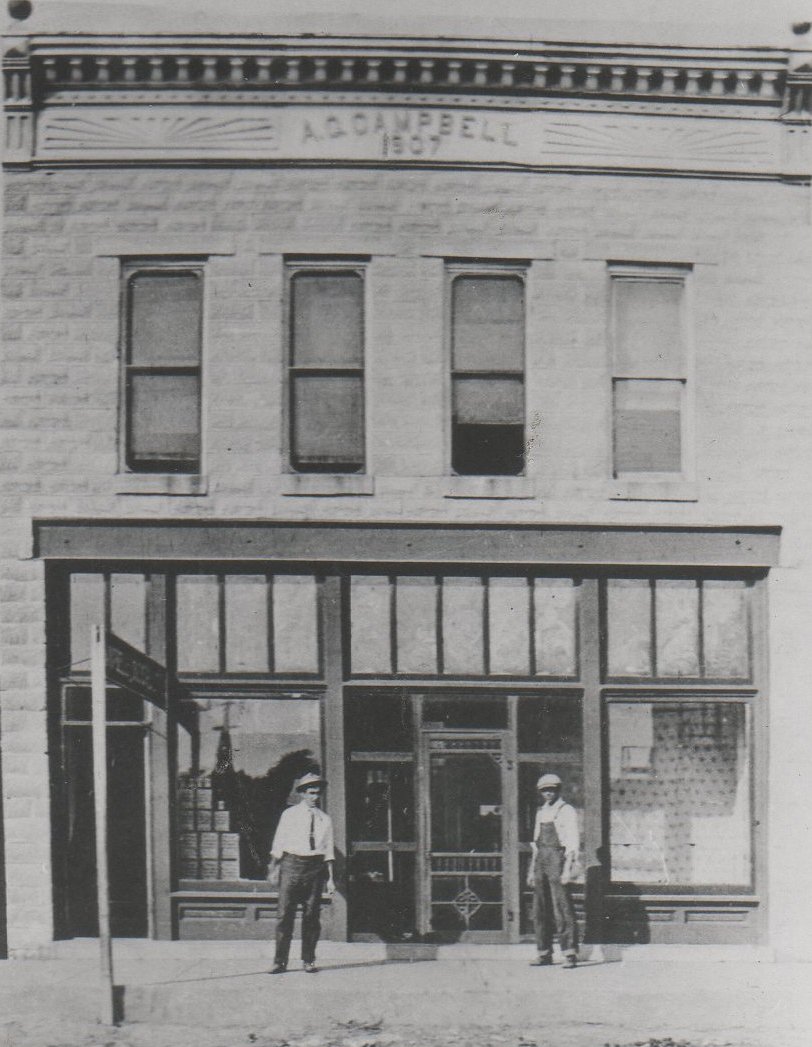
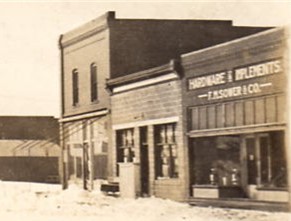
In addition to serving on the board of directors of the Deerfield State Bank, A.G. Campbell was a director for the Kearny County Bank as well as the First National Bank in Syracuse where he was president in the early ‘20s. The civically minded Campbell also held roles as a Lakin city council member, Kearny County commissioner, and a representative on the board of directors of the Kansas-Colorado Railroad Company. In June of 1910, A.G. announced his candidacy for the 116th Legislative District on the Republican ticket, but it was one of the few times in his life that he did not succeed.
The Deerfield Horse Breeders’ Association, Red Cross and the Lakin Commercial Club were just some of the many organizations he was also involved with.
Sarah Campbell died May 7, 1927. The Christian fortitude of Mrs. Campbell during her days of illness and suffering prior to her death made a profound impact on A.G. He joined the Presbyterian Church, making a public and emotional profession of faith. Prior to that time, he had been skeptical of religion in general. Adam Grant Campbell died just months after his wife on August 13, 1927, a life well lived.
SOURCES: Diggin’ Up Bones by Betty Barnes; “The Campbells have Come” by Earle D. Rice; History of Kearny County Vols. I & II; Ancestry.com; FindaGrave; Archives of the Lakin Investigator, Advocate and Independent; and museum archives.
New houses and store buildings sprung up seemingly overnight at Deerfield with the dawn of sugar beets in the area. Thinking the town would secure the sugar beet factory, inhabitants began to look around for an advertising outlet, and the town’s first newspaper, “The Deerfield Farmer” was launched on December 22, 1904. Though printed at Garden City, the local editor was a young Deerfield man by the name of Lewis Beckett. The inaugural issue claimed the aim of the paper was to, “help bring about better conditions financially and otherwise. To the citizens of Kearny county, to agricultural and stock interests, it will be especially devoted.” Although the paper lasted not even a year, the town of Deerfield continued to grow.
In January of 1905, Deerfield schools reported a total of 83 students, and so many laborers came during 1905 and 1906 that there was no place for them to stay. Tents were erected for housing including an extra-large tent that was used as a boarding house. On April 1, 1907, several resident electors of the community presented a petition to Kearny County Commissioners requesting that Deerfield be incorporated as a city of the third class. The number of inhabitants at that time inside the City of Deerfield was 225. The petitioners’ request was granted, and businessman John B. Piper was elected the first mayor when city elections were held later that month.
In April 1908, The Deerfield Telephone Company was organized providing both local and rural residents with phone services. Prior to that time, a wire had been run from Lakin’s exchange to the Corbett and Sower general store in Deerfield, and residents had to go to the store to place a phone call. Rural Route #1, which was Deerfield’s first and only postal route, was established Sept. 1, 1908 according to information provided by the late Arnold Kettler, former Deerfield postmaster. George Hurst was the first regular rural carrier and serviced his patrons by means of a horse-drawn vehicle when the 26-mile long route was initiated.
The Deerfield News, published by Cecil P. Rich, arrived on the scene in April of 1909, but Charles Oakford bought out Rich and assumed editorial duties the next month. Oakford also published a socialist paper called the “Prolocutor.” By mid-October, the Deerfield News was finished as the people became very antagonistic toward the editor when each issue became more and more filled with socialist articles and advertising. Deerfield residents became so incensed that that they burned an effigy of Oakford, and the editor was egged while attending a baseball game at Lakin. By the end of October, Oakford had bought a home in Garden City and relocated there.
Deerfield rose above the fray, and in December 1909, the Lakin Investigator declared, “Deerfield is one of the snappy towns of our county, and where three years ago was only one store and a couple of dwellings, now a little city of the third class, with over 200 people, mayor and councilmen full of ginger spirit that makes things move. Two churches, good schools, two general stores, bank and drug store located in brick blocks, two hotels, restaurant, harness store, hardware and implement, machine shop, meat market, lumber yard, livery, barber shops, pool rooms and everything found in a live little western town, surrounded by one of the most intensive farming districts in the whole valley.”
In 1911, John F. Carter began publishing the Deerfield Echo, and that same year, the Deerfield Commercial Club was organized to promote the interests of Deerfield and the surrounding country. C.L. Beckett was installed as president with Jacob Regher, J.E. Lander, L.T. Beckett, R.A. Beckett, I.L. Middleton, Carl Miller, Wm. Kersten, Adam Molz, A.D. White and J.W. Sowers listed as the other officers and directors. An August 1911 Echo listed the following as achievements of the Deerfield Commercial Club: securing large accommodating stockyards, securing the best newspaper of any town many times larger, placement of a public watering place, erection of an irrigating plant at the cemetery, securing a block for a city park, installing electric lights for the park and bandstand, and securing a doctor. “We think this is going some for a town of our age and size.”

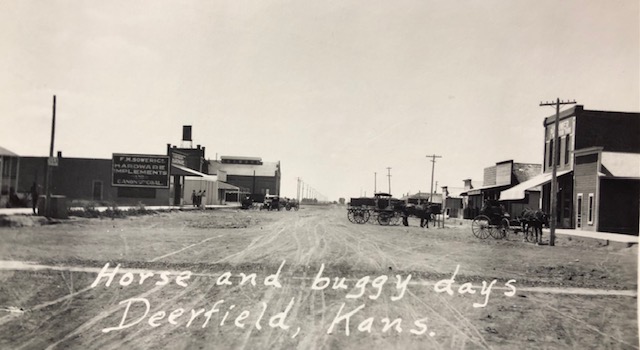
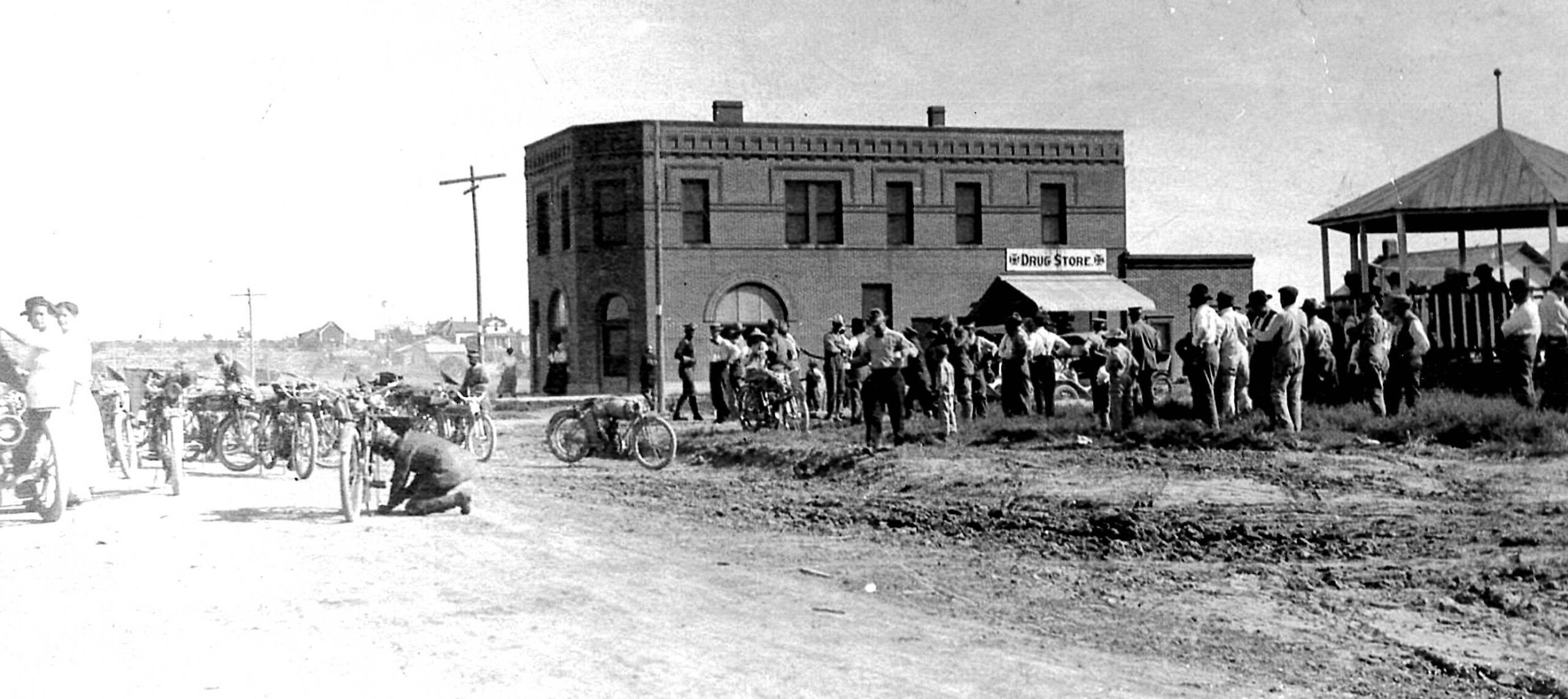
SOURCES: History of Kearny County Vol. 1; archives of the Deerfield Farmer, Deerfield Echo, Lakin Investigator, Advocate, Lakin Independent, and Evening Telegram; and Museum archives.